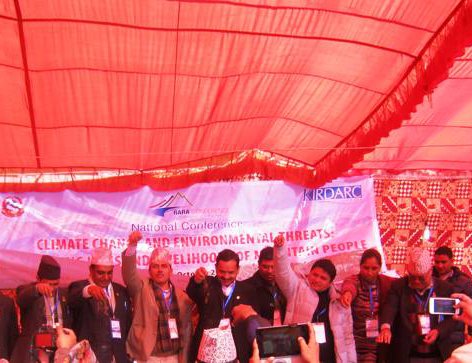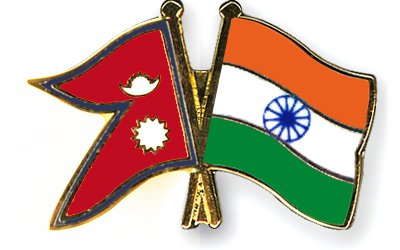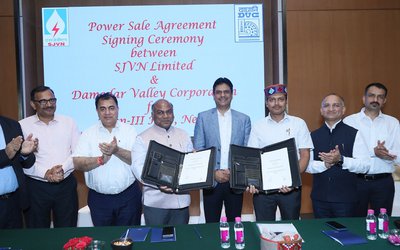
The Rara Lake is in a remote part of mid-western Nepal, 800 kilometers north-west from capital Kathmandu, with no road connectivity. The only available transport to get there is to fly to Talcha STOL airport from Nepalgunj Airport of southern Nepal.
However, the remoteness did not make any difference to the 60 experts and participants, government officials, and members of legislature, media persons, and activists and over 160 local participants, who reached there to take part in the National Conference. The title of the conference was Climate Change and Environment Threats: Protecting Lives and Livelihood of Mountain People.
Jointly organized by Ministry of Science Technology and Environment (MOSTE) and Karnali Integrated Rural Development and Research Centre (KIRDARC) Nepal, a leading civil society organization working in hilly areas of mid-west, the 2-day conference concluded by issuing a 9-point Rara Declaration, which raises the voices of the mountain people.
Although the Ministry of Science, Technology and Environment does not have its own minister, the conference was successfully concluded under the dynamic leadership of MOSTE Secretary, Dr. Krishna Chandra Poudel.
For a mountainous country facing enormous problems related to climate change, Nepal found the Rara Conference was very significant. “People living in mountains and hills are the most vulnerable to climate change, which is most likely to affect the mountains and Himalayan region. Thus, this conference was organized in Rara, the middle hills,” said Dr. Poudel. "Rara and mid-western region have been facing many problems related to climate. The government is ready to establish a Climate Adaptation Study Center in Karnali.”
This was not the first conference organized by Nepal to discuss the possible implications of climate change on mountain people and mountains. It is the third in a series. However, the conference was significant and more meaningful in the sense that it was held just less than a month before COP 20 in Lima.
Nepal has been established as a pioneer country to unite mountain countries and mountain people to make a common stand. It launched the first Mountain Initiative in 2009, hosting an International Conference named Kathmandu to Copenhagen.
Just before the COP 15, Nepal also held its cabinet meeting at Kalapatthar, Everest region, at over 5,000 meters, to draw the attention of the world to the cause of mountains. Similarly, Nepal also organized an International Conference of Mountain Countries on Climate Change in 2012 April.
These Conferences offer an opportunity for mountain Governments and stakeholders to come together on a common platform to deliberate on mountain issues and the wellbeing of mountain people, and help them attempt to arrive at a common understanding of the needs and concerns of mountain regions.
Lima COP20 is going to be important for the mountain countries like Nepal as Peru is herself a mountain country facing severe consequences of climate change on its mountains and glaciers. Thus, Rara conference has a greater meaning in the context of COP 20.
“Climate change and green gas produced by the industrialized countries have affected the lives in the developing countries,” said Dr. Pitamber Sharma, former vice chairman of National Planning Commission.
Secretary at the Ministry of Science and Technology Krishna Chandra Poudel expressed the commitment that the government would take initiatives to implement the issues raised in the conference.
“The National Conference on Climate Change and Environmental Threats Protecting Lives and Livelihoods of Mountain People was a forum provided to understand climate change impacts and environmental threats better in the context of Nepalese mountains. The conference aimed to make the community and public aware of the consequences of climate change and help them explore the solutions to address mountain climate change issues through community engagement in coordination with other national processes and benefiting from global and local knowledge,” said Min Bahadur Shahi, executive director of KIRDARC.
The participants also discussed how to learn from and share with Nepalese mountain communities and to get an overview of climate change impacts as well as developed responses and threats to their livelihood from other environmental challenges.
A collaboration of Practical Action, Action Aid Nepal, Nepal Tourism Board, District Development Committee Mugu, ICIMOD, Mission East, Restless Development and Water Aid, this is the 'first of a kind' program held in Nepal with a large participation of local communities.
The conference also helped to identify areas of cooperation between mountain communities from other parts of the world in terms of knowledge transfer, twining initiatives and international advocacy.
Mountain Focus
People living in the mountain areas have similar problems and challenges. Scientists and experts have predicted extreme weather events, including drought, cloud burst, hail storm and glacier outburst in all mountain countries.
Although it is yet to be ascertained scientifically about everything climate, the implications of climate change are gradually appearing. When the inaugural session was on, a group of farmers held a protest rally demanding compensation for the lost of harvest by hail storm. The farmers living in 12 VDCs of Mugu district lost their rice harvest by unusual hail storm of October 19.
Earlier this week, an avalanche and blizzard struck Nepal killing at least 26 people, adding fuel to the debate on climate change and extreme weather events. The rise in such events is forcing an increasing number of people around the world, particularly the most vulnerable, to take adaptation measures.
Although it is yet to be scientifically proved whether the events were caused by change in temperature or otherwise, farmers claimed that they had not seen such a hailstorm in the last sixty years.
“I have not seen five feet high hailstorm in the village like this one. As the hailstorm destroyed all the harvests, we have nothing to eat,” said Harka Bahadur Thapa, 65.
If the temperature fluctuates, the people have to see more devastation in the coming days. Experts have already warned of harsh impacts of climate change in the mountain areas, including the shrinking of glaciers and extreme rain, including cloud bursts.
“Although Nepal has made no contribution to warm the earth, Nepalese have had to pay the price. Everyone has to pay the cost of the pollution others have made,” said Dr. Pitamber Sharma, former vice chairman National Planning Commission as a key note speaker of the conference. “One individual pays the price for a mistake committed by another.”
Status of Mountain
According to ICIMOD, mountains cover around 24% of the Earth’s land surface and host about 13% of the world population. Mountains are the providers of essential ecosystem services and play the role of water towers to billions of people living in downstream slopes, valleys and plains – directly and indirectly.
Over 80 percent of Nepalese land is covered by mountains and high Himalayas and over 13 million people are living in these difficult terrains.
As they get access to less opportunities, mountain people, particularly the disadvantaged and marginalized groups, suffer from increasing poverty, natural hazards, deprivation and socioeconomic conflicts. Climate change has exacerbated these challenges. "Climate change, natural hazards and other forces threaten the functioning of the complex web of life and livelihoods that mountains support," reports ICIMOD.
RARA conference has a significant meaning at the present context as the host country, Peru, one of the mountain countries, is also facing similar consequences like Nepal does due to climate change, is hosting the COP 20.
Although Peru is far away from Nepal, it has claimed that over 40 percent of its glaciers are under threat of shrinking and it is affecting the farmers living in lower riparian sites. Thus, the concern raised by Rara Conference is meaningful.
Although Nepal hosted a cabinet meeting at Kalapatthar in 2009, just a week before COP 15 in Copenhagen, to show the world how rising temperature was threatening glaciers of Himalayas, Rara Conference is different because it is overwhelmingly participated in by the people from the community level.
“Climate change will affect our livelihood. We need to discuss it at various levels so that we can formulate development projects looking at the future implications,” said Rabindra Adhikari, chairman of Development Committee of Legislature Parliament. “Legislature-Parliament will support any move to minimize the implications of climate change.”
Without much expense and publicity, the Rara Conference came out with a resolution consisting of the voices of the mountain communities, who have been facing devastating consequences of the extreme weather situations.
“The recent weather phenomenon has shown that Nepal needs to prepare for extreme climate, including intense rain, drought and unexpected hailstorm. Due to heavy rain, lower and hilly areas of mid-western region were badly affected with an estimated loss of over 15 billion rupees,” said Dr. Professor Govinda Raj Pokharel, vice chairman of National Planning Commission. "Nepal needs to prepare for all kinds of extreme weather in the future.”
Rara Declaration
With two days of intense discussions, debates and demonstrations, the Rara national climate change conference came out with a nine-point declaration on Friday, October 31, 2014.
The Rara Climate Change Conference points out that the least developed countries like Nepal were facing greater problems due to global warming, a result of activities of industrial countries with huge economic powers.
It declared that various phase-wise debates and advocacy will be held to stop and minimize the impact of global warming.
The conference has decided to hold a debate at Asian level and brief about the impact of climate change on Nepal's Himalayas at various forums, including UN and other international conferences participated in by Nepal.
The declaration has emphasized on bringing lasting tourism strategy in the Himalayan region, and organic and professional agricultural production citing increasing poverty due to losses incurred by landslides, flooding and avalanche resulting from melting of snow caps.
The resolution stressed on the establishment of Climate Change Research Center in Karnali region that will hold data relating to changes seen in the region since the ancient times and provides effective information on climate change impact.
The conference has called for a master plan to promote tourism in Rara, preserve local culture and manage environment-friendly natural resources so as to promote Karnali region as a tourist destination.
The declaration paper has called for a tourist trekking route spanning Rara, Sinja, Dailekh and Dullu, and Khalanga of Jumla to Badimalika and Khaptad to Dolpa in the far western region.
The declaration said climate change has influenced livelihood of the people living in the Himalayan and Hilly region.
The declaration calls for a research center on environment and climate change to study the impacts of global warming on natural habitat of mountainous region and seeking ideas to mitigate the effects.
“Rara declaration has shown the road map for protection of Nepal’s mountain and people living there from rising temperature,” said Dr. Madan Koirala, an expert on climate change.
Conference Themes and Special Sessions
In the 2-day conference, a number of parallel interactive sessions were held on the themes of climate change impacts, adaptation measures and DRR, Eco-tourism, rural entrepreneurship and mountain livelihood in a changing climate, Climate Justice –role of media, CSOs and development agencies and Government initiatives and international processes.
A special session was also organized for participants to discuss how global knowledge can help mountain communities in Nepal to solve climate crisis and improve livelihoods and how Nepalese mountain community can find a way to engage in international processes in an organized manner.
Expert knowledge of mountain geography and ecosystems allows us - to be highly influential witnesses to climate change in our time and to extend that influence beyond the Himalayan community to everyone around us.
"The conference aims to explore solutions to address mountain climate change issues through community engagement in coordination with other national processes and benefiting from global and local knowledge,” said Ajaya Dixit, executive director of ISET.
Glaciers under Threat
Experts also discussed the possible implications to the glaciers of Himalaya region and expressed the concern over the rising the temperature and its implications to fresh lakes like Rara.
“We need to think about the extreme weather events and their implications to the food production. Climate change will be a greater threat to food security,” said executive director Dixit.
Nepal's glaciers are also threatening the life of mountain people and people living downstream.
"Due to climate change, Nepal is going to be more prone to natural disasters. It will create more problems for the people living not only upstream but also those downstream," said Gehendra Bahadur Gurung from Practical Action.
Organized at the initiative of Ministry of Science, Technology and Environment, the Rara conference had its main aim to press participants at COP20 to act on the fact that mountains are vulnerable and people are under a threat.
(Reporting from Rara Mugu district)

Keshab Poudel
Poudel is the editor of New Spotlight Magazine.
- ETFC Nepal is focused on expanding distribution and transmission to the private sector: ETFC Chair Dr. Dhital
- Jul 05, 2025
- FOURTH PROFESSOR Y.N. KHANAL LECTURE: Nepal-China Relations
- Jun 23, 2025
- Colonel JP CROSS: Centenary Birthday
- Jun 23, 2025
- REEEP-GREEN: Empowering Communities with MEP
- Jun 16, 2025
- BEEN: Retrofitted For Green
- May 28, 2025















